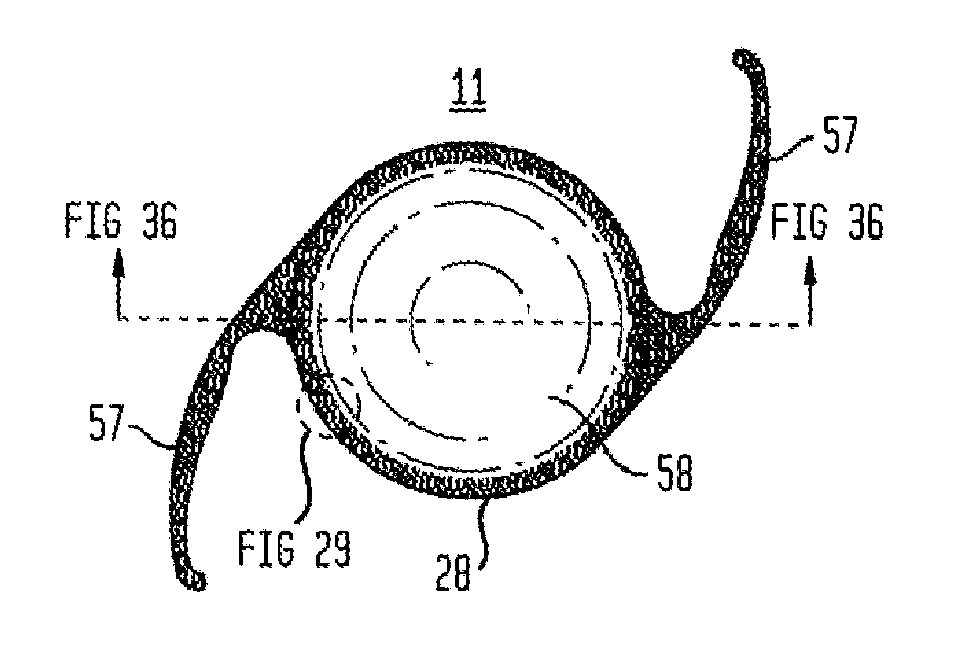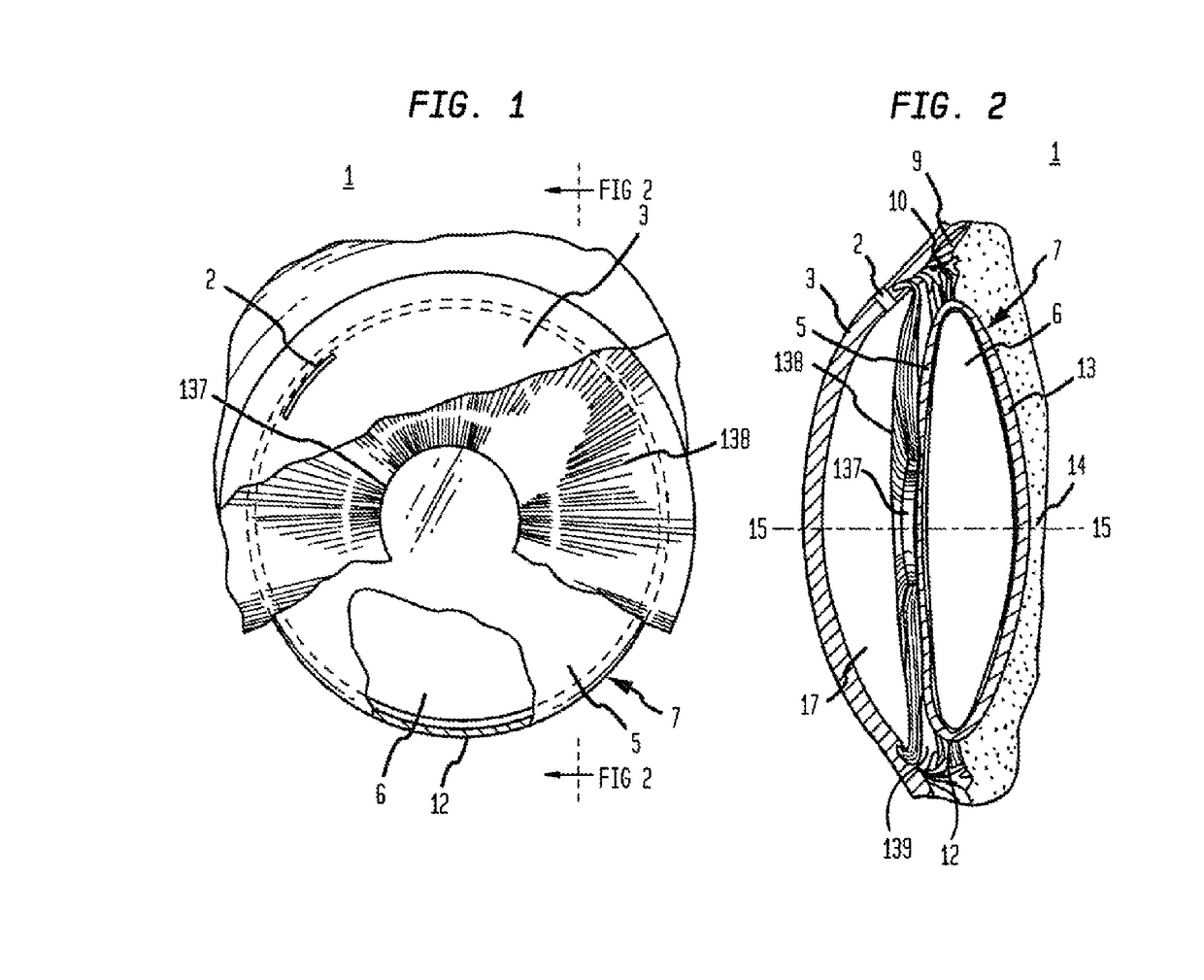Micropatterned intraocular implants
a micro-patterned, intraocular technology, applied in the field of intraocular implants, can solve the problems of postoperative intraocular pressure spikes, difficult to treat, irreversible amblyopia, etc., and achieve the effects of reducing the travel of the intraocular implant, and reducing the size of the sli
- Summary
- Abstract
- Description
- Claims
- Application Information
AI Technical Summary
Benefits of technology
Problems solved by technology
Method used
Image
Examples
example 1
[0215]Now referring primarily to FIGS. 39 through 42, smooth and patterned flexible membranes (19) were fabricated by casting biomedical grade polydimethylsiloxane elastomer (“PDMSe”, SILASTIC® MDX4-4210; Dow Corning, Midland, Mich.) against negative silicon wafer molds. The flexible membranes (19) produced by this method included a plurality of patterned surface elements (28) and non-linear channel elements (71) arranged in a pattern (72) as shown in the examples of FIGS. 39 through 42 that either protruded from the surface of the PDMSe flexible membrane (19) as shown in the example of FIGS. 39 and 40 or were recessed into the PDMSe flexible membrane (19) as shown in the examples of FIGS. 41 and 42. A pattern (72) with patterned surface elements (28) protruding 3 μm from the surface of the flexible membrane (19) that were 2μm wide and spaced by 2 μm would be called +3SK2×2. The patterns (72) replicated for testing included smooth unpatterned “SM”, −3SK2×2, +3SK2×2, and +7SK10×5.
[02...
example 3
[0218]Now referring primarily to FIGS. 81A through 81D and 82, circular flexible membranes (19) (diameter=about 20 mm) including “SM”, −3SK2×2, +3SK2×2, and +7SK10×5 samples were adhered to a 12-well plate with the axis A′-A′ (101) of the plurality of groups of surface elements (78) of the −3SK2×2, +3SK2×2, and +7SK10×5 samples aligned orthogonal to the direction of cell adhesion, growth, or migration (107) and treated with 15 μg / mL fibronectin (BD Biosciences, San Jose, Calif.) in phosphate buffered saline (Life Technologies, Carlsbad, Calif.) overnight to facilitate cell attachment. A modified scratch-wound assay was created by blocking cell attachment to the samples using SM PDMSe rectangles (3 mm×320 mm) placed along the center of the flexible member (19) to simulate wound areas (140). LECs (16) (ATCC CRL-11421; ATCC, Manassas, Va.) were seeded over the entire assembly at 1×104 cells / cm2 and maintained in growth media (Eagle's Minimum essential media; ATCC), 20% fetal bovine ser...
example 4
[0219]Now referring to FIGS. 22 through 30, steel casting molds were designed and machined by 103 MicroStructures (Wheeling, Ill.) for prototype intraocular implant (18) production. Intraocular implants (18) (as shown by the examples of FIGS. 22 through 30) were replicated in PDMSe and sterilized by immersion in 70% ethanol in water (vol / vol) prior to use. Intraocular implants (18) were designed with a generally circular annular member (50) (outer annular surface (52) diameter of about 9.5 mm). A thin flexible membrane (19) (thickness (24) of about 0.1 mm) spanned the area between the annular member (50) and an aperture element (26) providing a visual axis (15) for the optical lens (58) (diameter of 5.5 mm) of an IOL (11). The inner annular surface (51) of the annular member (50) had an annular inner surface height (56) of about 1.2 mm to which the haptics (57) of the IOL (11) were engaged to retain the IOL (11) within the intraocular implant (18). The flexible membrane (19) was des...
PUM
 Login to View More
Login to View More Abstract
Description
Claims
Application Information
 Login to View More
Login to View More - R&D
- Intellectual Property
- Life Sciences
- Materials
- Tech Scout
- Unparalleled Data Quality
- Higher Quality Content
- 60% Fewer Hallucinations
Browse by: Latest US Patents, China's latest patents, Technical Efficacy Thesaurus, Application Domain, Technology Topic, Popular Technical Reports.
© 2025 PatSnap. All rights reserved.Legal|Privacy policy|Modern Slavery Act Transparency Statement|Sitemap|About US| Contact US: help@patsnap.com



